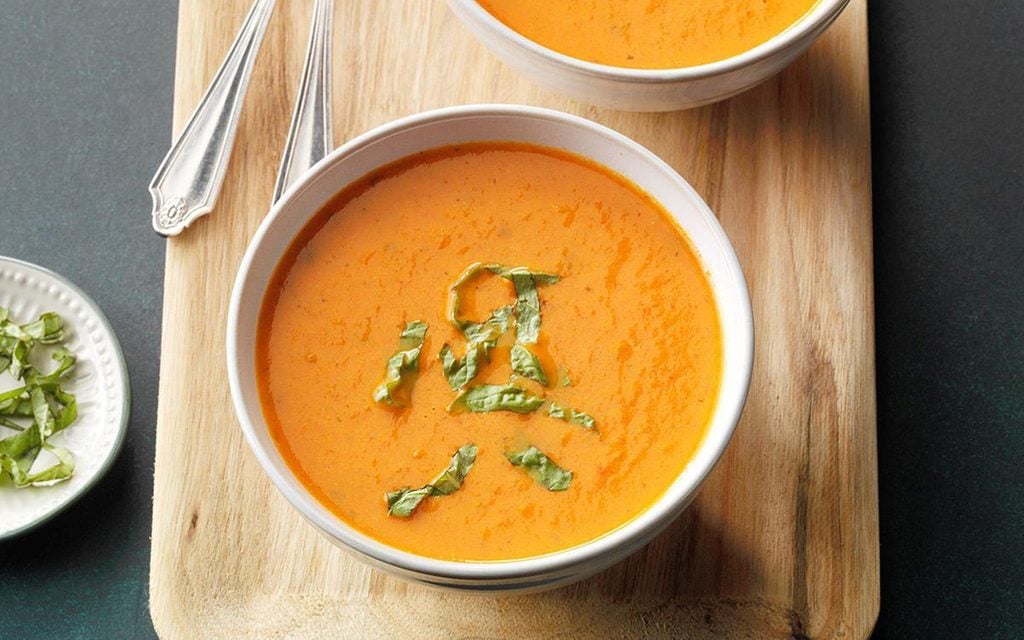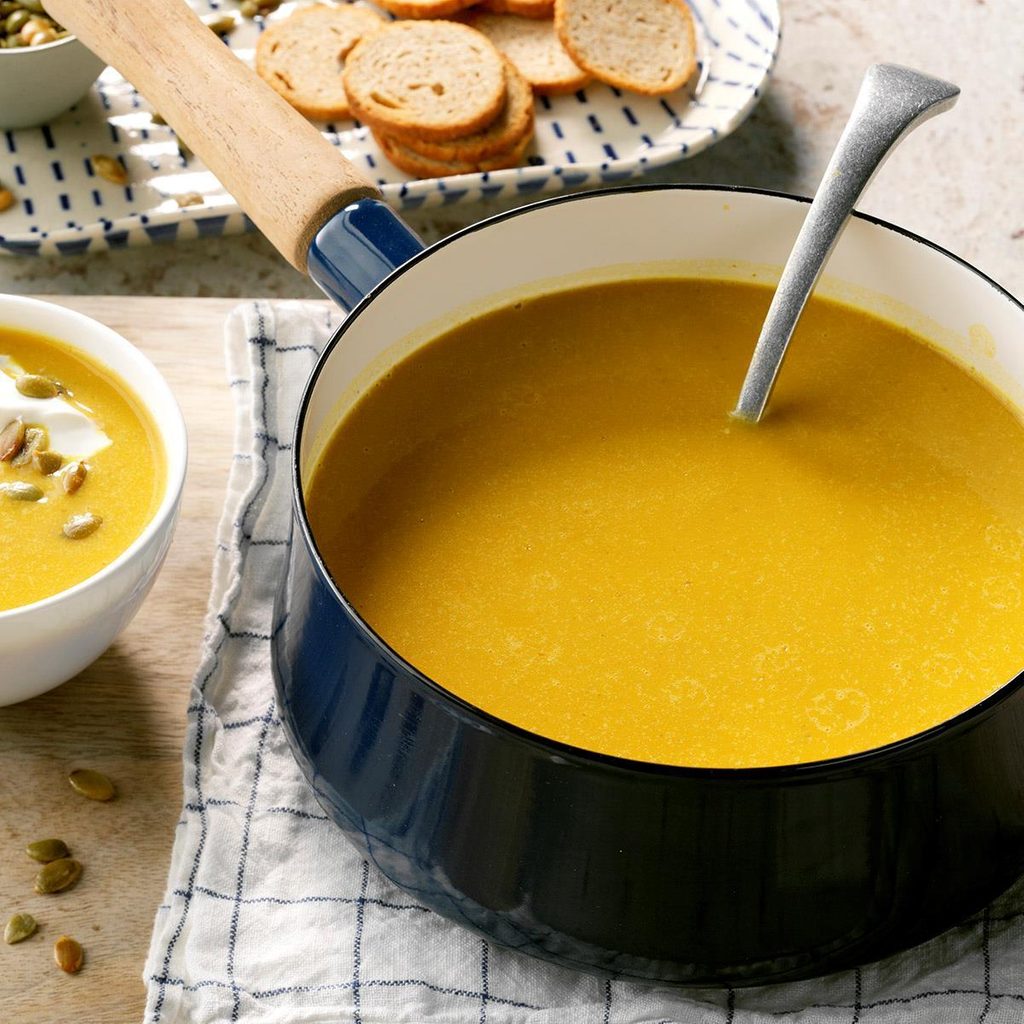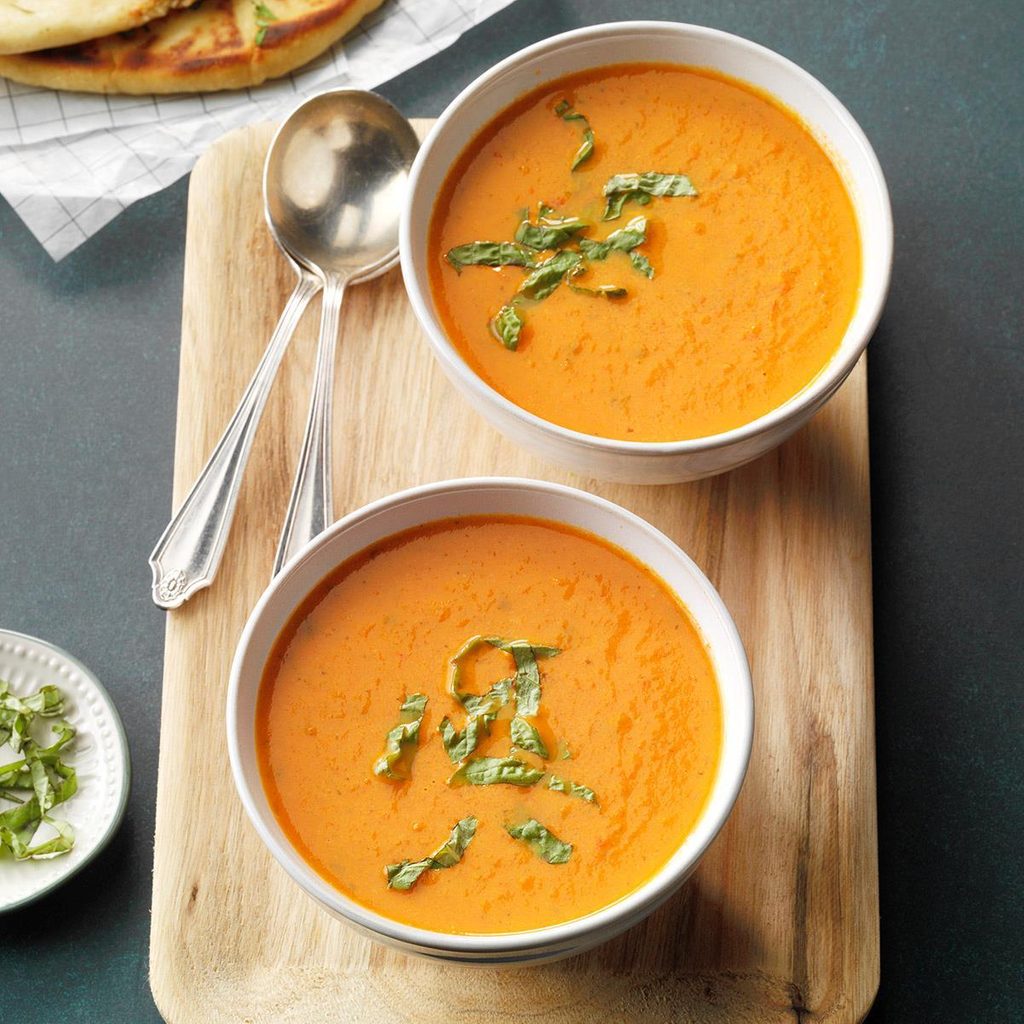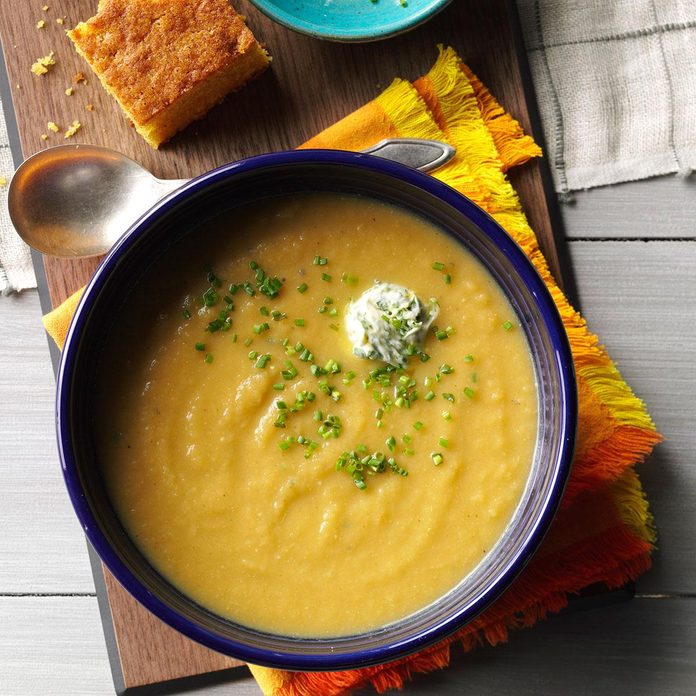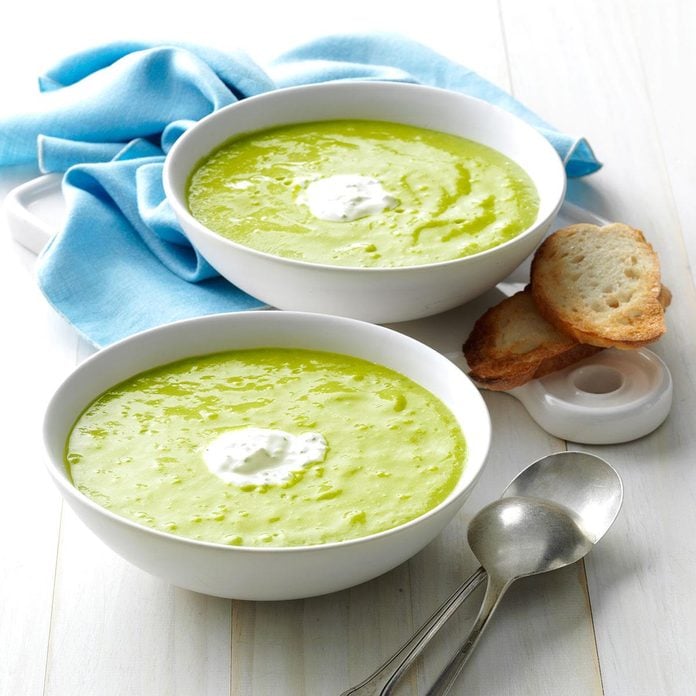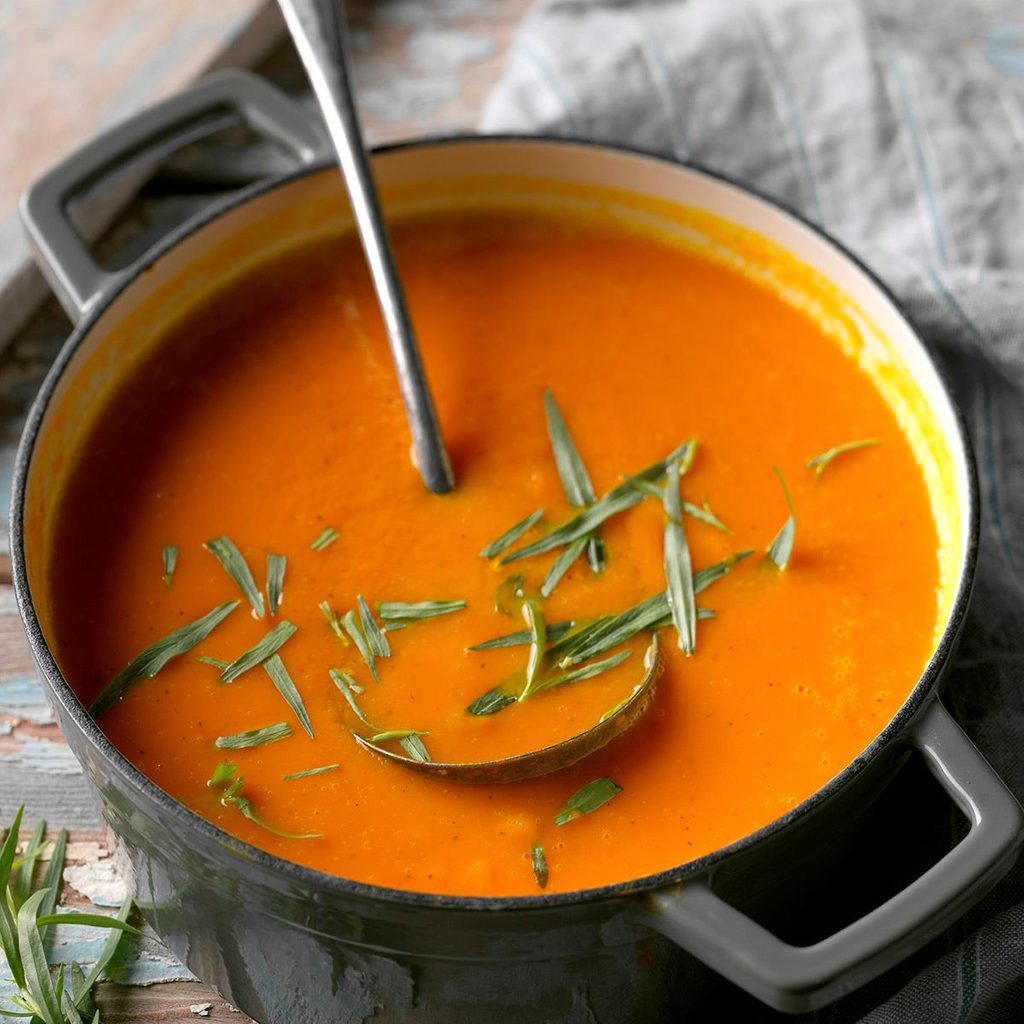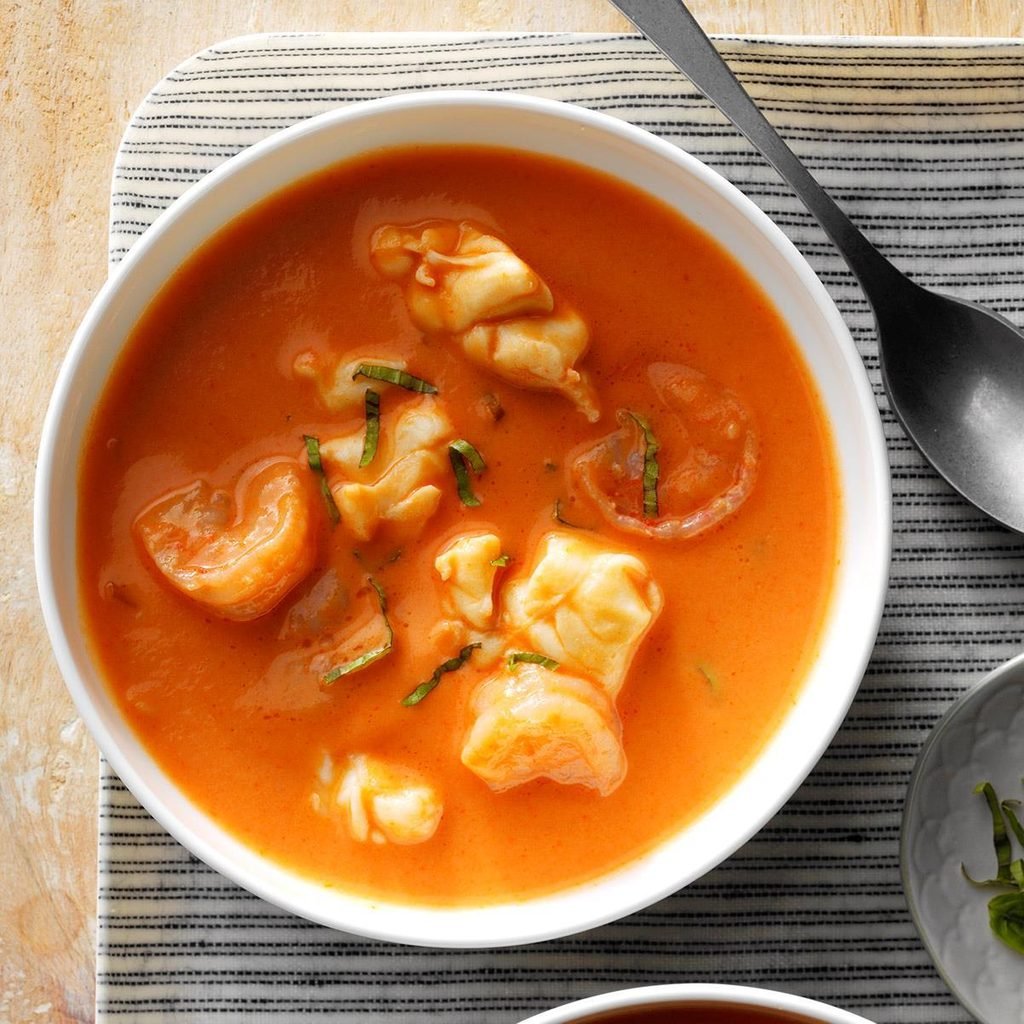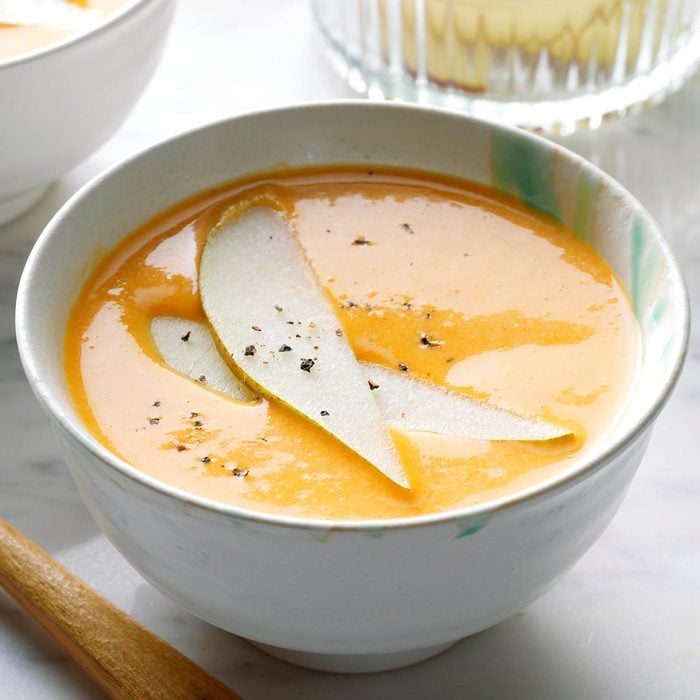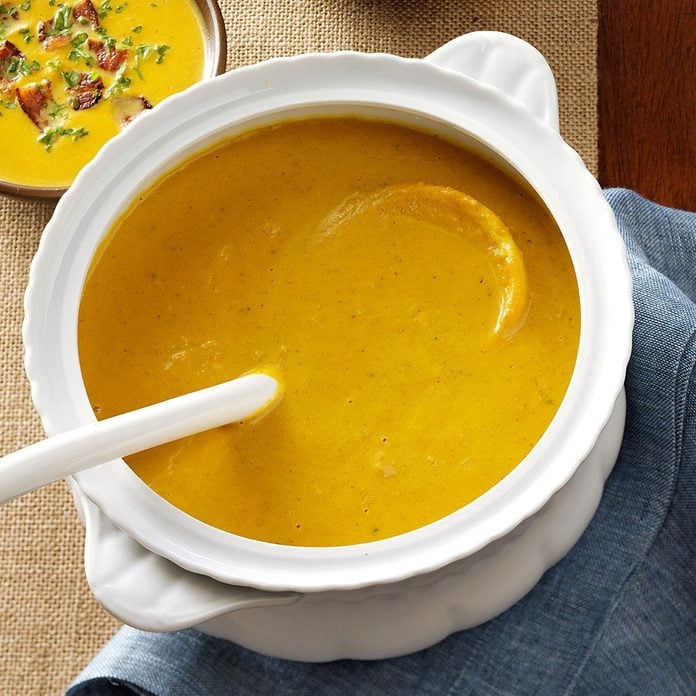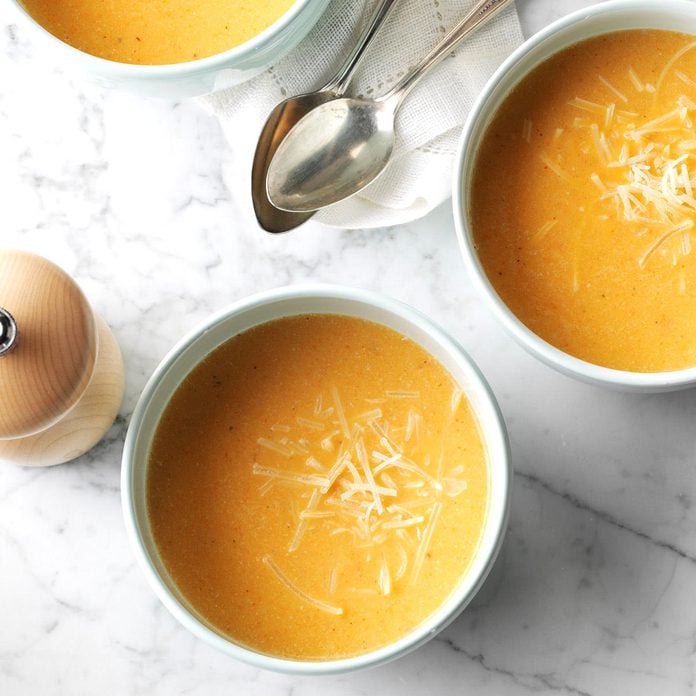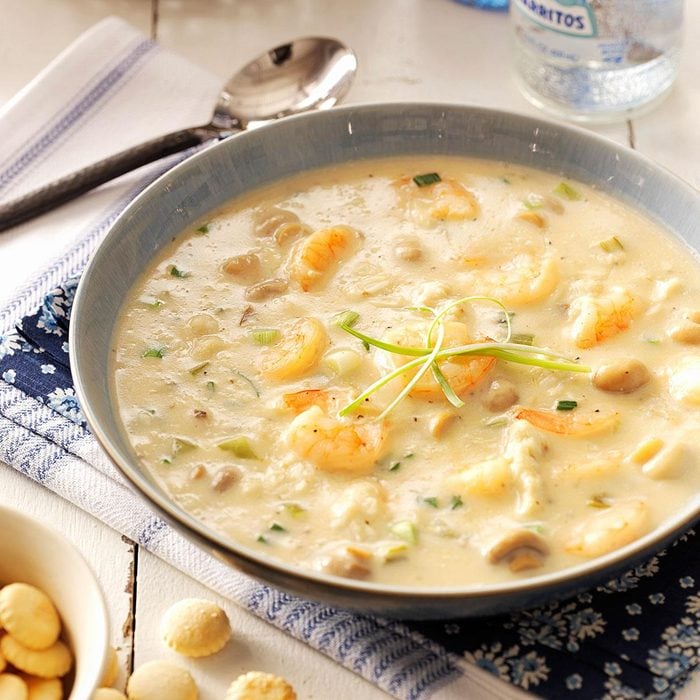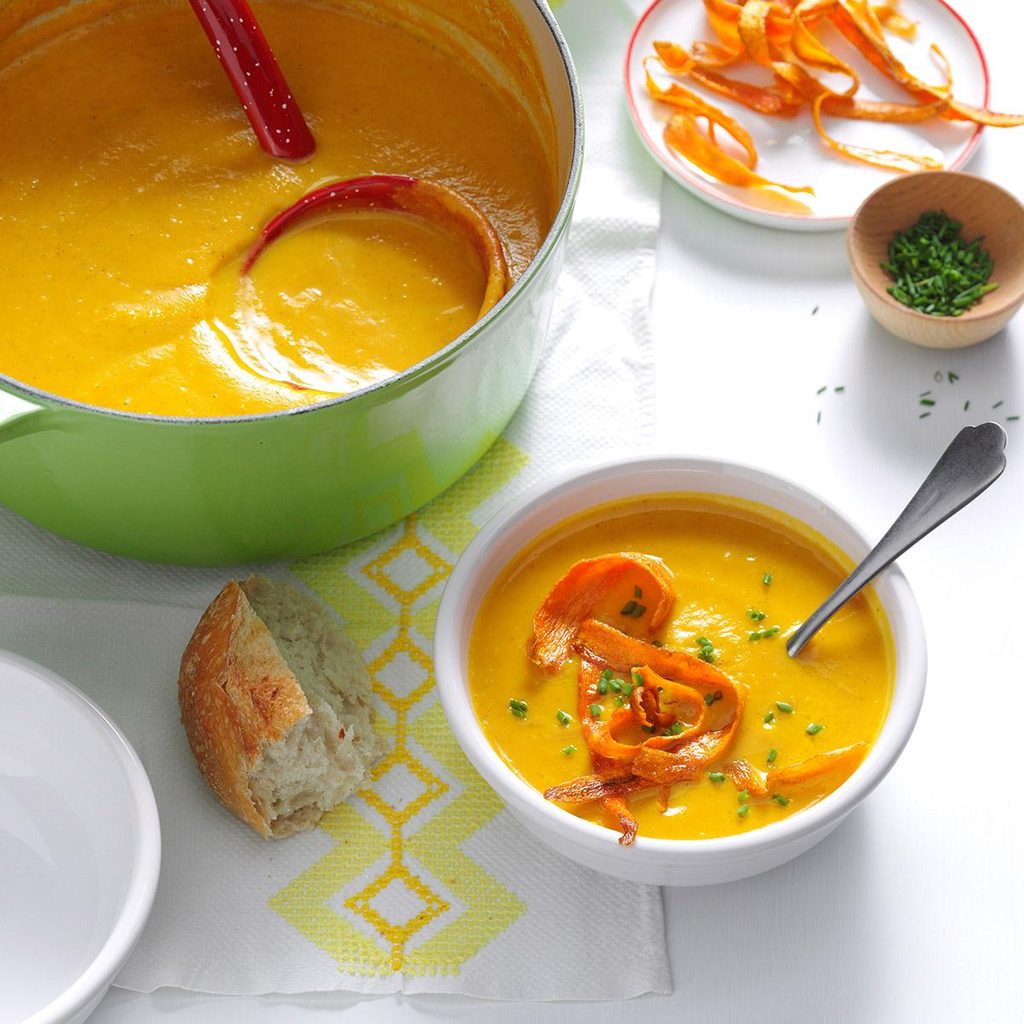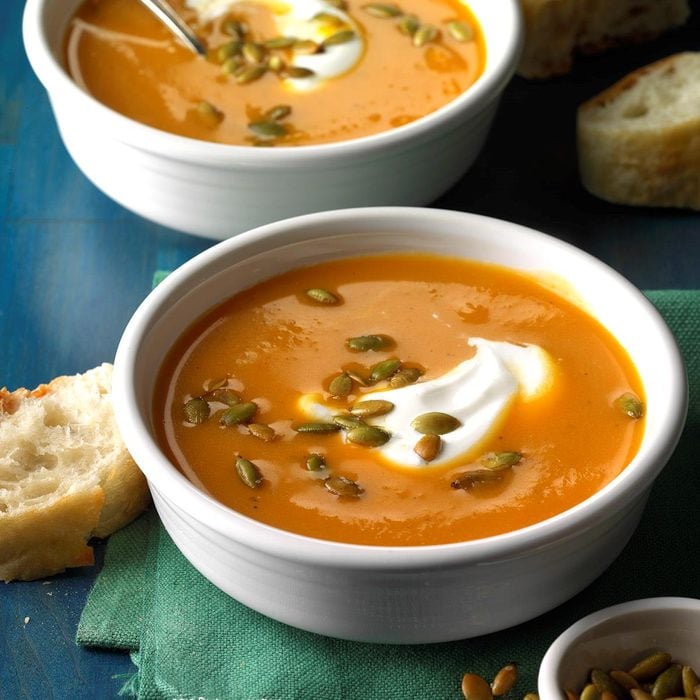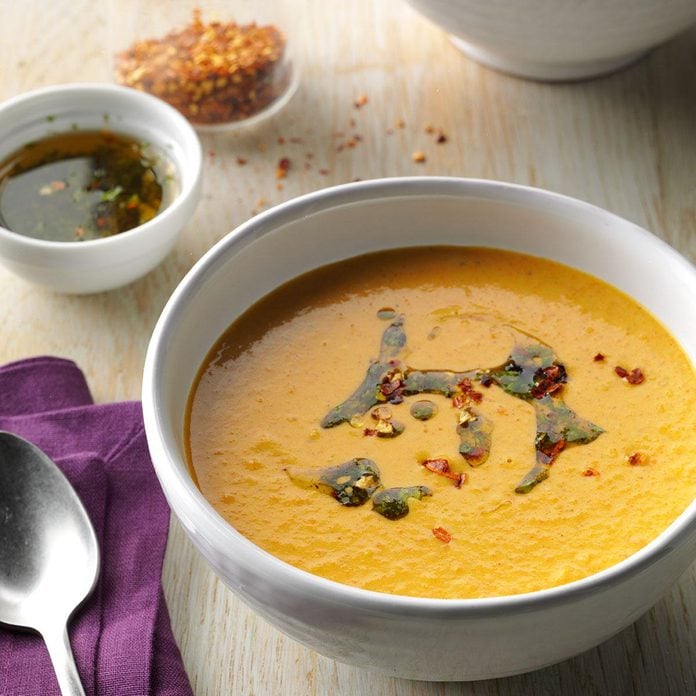It’s the perfect season to curl up on the couch with something warm. For cold nights, a bowl of creamy bisque will fulfill all of your comfort food cravings. So many people throw that French-sounding word around, but really, what is bisque?
The answers to all your questions are below. You’ll be talking about bisque like Julia Child in no time!
Here are more cooking tips from our favorite French chef.
What Is Bisque?
A traditional French chef would define a bisque as being a thick, creamy soup made with shellfish and thickened by a paste made from their shells. Julia Child was one chef to popularize lobster bisque in the United States; her recipe uses both the shells of the lobster and rice to thicken the bisque.
Today, the definition of bisque has expanded to include vegetable bisques, like tomato and butternut squash. The word is more related to the smooth texture of the dish and the use of cream. Most modern bisques are thickened using rice. Some cook the rice in the broth and strain it out later, using only the left-behind rice starch to thicken the soup. Others puree the rice into the soup to thicken it. Almost all bisques are finished with hot cream for a velvety texture. The richest bisques also include butter!
Bisque should feel smooth and luxurious so it must be very thoroughly blended. In the past, chefs would’ve used a vintage tool called a food mill to ensure everything was absolutely smooth, but you can use an immersion blender.
How Is Bisque Different Than Soup?
Bisque is a specific kind of soup. So all bisques are soup, but not all soups are bisques.
The most similar type of soup to bisque is chowder. Unlike bisque, which should be smooth and creamy, chowder has hearty chunks of meat or vegetables. Chowder is almost always thickened with a roux instead of blended ingredients. Check out our favorite chowder recipes.
How to Make Bisque
Generally, a bisque recipe will follow these steps:
- Heat onions, mirepoix (another French cooking word you should know) or other vegetables with seafood shells or another main ingredient until fragrant.
- Cover with stock or other base, add rice and bring to a boil; then, reduce to a simmer.
- Remove large shells and puree or blend soup. This is a great time to use your immersion blender! Here’s the model our Test Kitchen loves.
- Finish by stirring in hot cream and/or butter.
- Garnish with large chunks of seafood or finely chopped vegetables in the center of the soup.
Each recipe will have slight variations on this method, depending on the ingredients, but the basic steps don’t change. Who knew French cooking could be so easy?
Our Best Bisque Recipes
Garlicky Cheddar Cheese BisqueI came up with a cheddar cheese soup a while ago and decided to give it a boost with a variety of root vegetables. Crushed pita chips and fresh parsley make fun garnishes. —Patricia Harmon, Baden, Pennsylvania
Creamy Seafood BisqueThis deceptively simple bisque makes a special first course or even a casual meal with a salad or bread. I like to top bowls with shredded Parmesan cheese and green onions. —Wanda Allende, Orlando, Florida
Pumpkin-Coconut SoupThai food lovers will go crazy for this soup. It has a deep flavor from the combination of onion, coconut milk and spices. —Susan Hein, Burlington, Wisconsin
Parsnip & Celery Root BisqueHere’s a simple yet elegant soup for fall and winter. Everyone enjoys the smooth texture and earthy veggies. For a colorful garnish, sprinkle on chives and pomegranate seeds.—Merry Graham, Newhall, California
Smoky & Spicy Vegetable BisqueI like to serve this soup with a side of bruschetta or a caprese salad to make a complete meal. It is also suitable as a first course. Adjust the amount of chipotle pepper to make it more or less spicy, depending on your preference.—Juliana Inhofer, Rocklin, California
Sweet Potato and Crab SoupThis sweet and savory soup is quick and easy to prepare. You can substitute butternut squash or pumpkin for the sweet potatoes, depending on what you have on hand. —Judy Armstrong, Prairieville, Louisiana
Autumn BisqueI like cozy comfort soups that taste creamy—without the cream. This one’s full of good stuff like rutabagas, leeks, fresh herbs and almond milk. —Merry Graham, Newhall, California
Asparagus Soup with Lemon Creme FraicheA fresh and easy asparagus soup, pureed until it's smooth, is a definite winner. Serve it warm or chilled depending on the weather.—Fern Vitense, Tipton, Iowa
Carrot Soup with Orange & TarragonA pretty orange color, a delicious hint of citrus and a garden-fresh flavor make this soup a requested dish at my many celebrations. Try sprinkling individual bowls with fresh tarragon before serving. —Phyllis Schmalz, Kansas City, Kansas
Beer-Cheese Velvet SoupThis soup was a hit with a group of German exchange teachers who visited our high school. When I don't use bread bowls, I usually serve it with soft pretzels or crusty bread. And it's also an even bigger treat with slices of cooked bratwurst or kielbasa stirred into it. —Paula Zsiray, Logan, Utah
Elegant Seafood BisqueCreamy bisque is elegant enough for sit-down dinners yet hearty enough for casual gatherings.—Mike Payne, Hixson, Tennessee
Cheddar Pear SoupPears and sharp cheddar have always been one of my favorite flavor combos. This recipe brings the two together in a creamy, delicious soup. I like to serve it with a warm baguette and fresh fruit for lunch or a light supper. —Trisha Kruse, Eagle, Idaho
Pumpkin Bisque with Smoked GoudaI love the smell of this rich, cheesy soup as it bubbles on the stove. The Gouda cheese adds a delightful smokiness that just says autumn to me.—Kerry Dingwall, Ponte Vedra, Florida
Roasted Cauliflower & Red Pepper SoupWhen cooler weather comes, soup is one of our favorite meals. I developed this recipe for my husband and me. I wanted it to be a healthier version of all the cream-based soups out there. After a bit of trial and error, this is the keeper. —Elizabeth Bramkamp, Gig Harbor, Washington
Seafood BisqueWe live on the Gulf Coast, where fresh seafood is plentiful. I adapted several recipes to come up with this rich bisque. It's great as a first course or an entree, and it can be made with just shrimp or crabmeat. —Pat Edwards, Dauphin Island, Alabama
Carrot-Parsnip BisqueWarm and comforting, this delicious soup makes a pretty presentation. Easy to prepare, it's a treat to serve for family dinners and special enough for guests. —Lisa Speer, Palm Beach, Florida
Slow-Cooker Sweet Potato SoupI love that I can top this creamy soup with anything my heart desires, which means I can eat it several days in a row without ever having to have it the same way twice. You can substitute fresh onions and celery in this recipe if you prefer, but using the dried version makes it easy to throw together on a weekday morning. —Colleen Delawder, Herndon, Virginia
Ginger Butternut Squash BisqueThis soup is filling enough for my husband, and it’s vegetarian, which I love. The couple who introduced us made it for us on a freezing night and we’ve been hooked ever since. —Cara McDonald, Winter Park, Colorado
Sweet Potato BisqueI love to serve this bright orange, sweet potato bisque for special occasions in fall and winter. The recipe includes a minted chili oil to drizzle on top. It's well worth the few extra minutes it takes to make! —Lily Julow, Lawrenceville, Georgia
